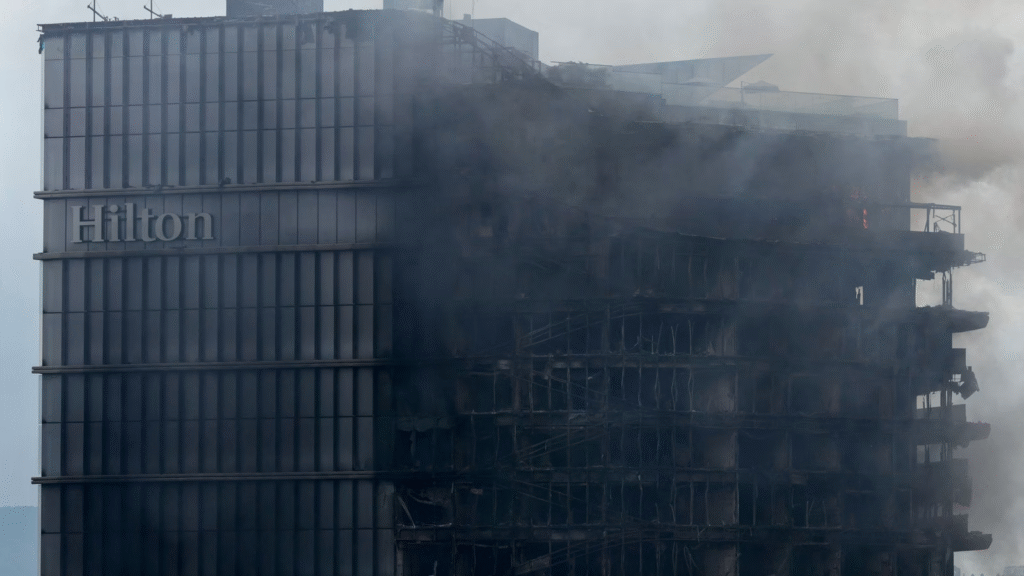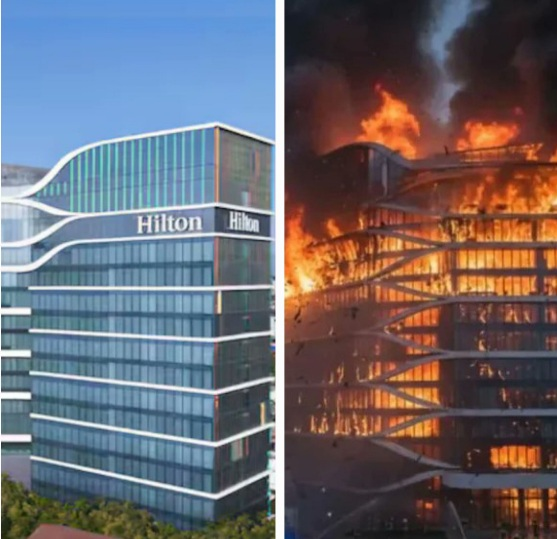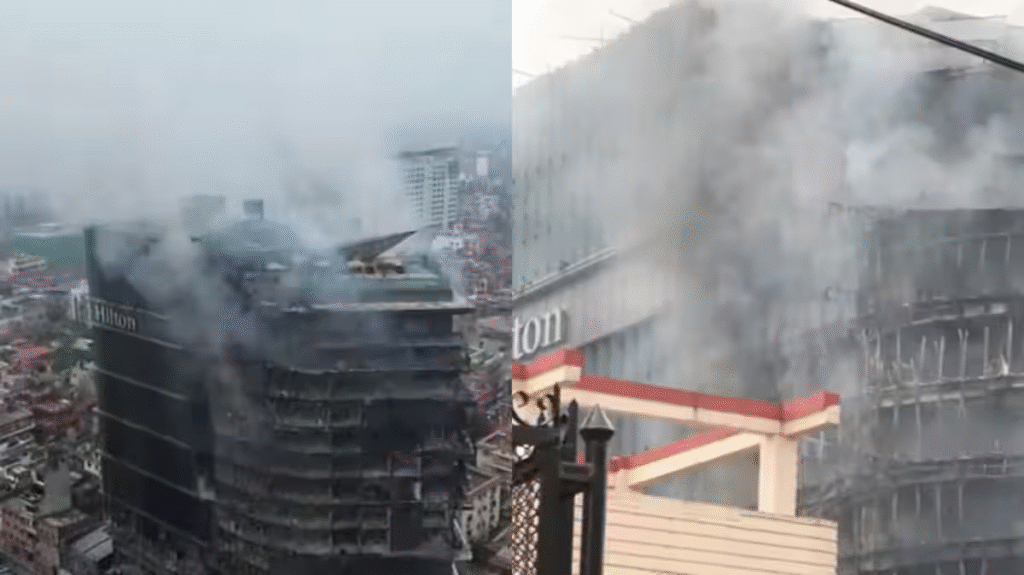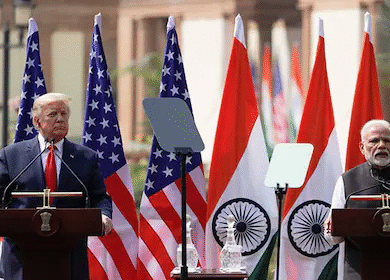Kathmandu Protests Turn Violent: Gen Z Unrest Leaves Hilton Hotel, Nepal’s Tallest at 17 Floors, Charred and Gutted
Kathmandu protests escalate as Gen Z demonstrators set fire to Nepal’s tallest Hilton Hotel, a 17-floor landmark, leaving the iconic building charred and gutted
Once the tallest building in Nepal’s Kathmandu, all that is now left of the Hilton hotel is charred ruins. The five-star property was set on fire on Tuesday by ‘Gen Z protesters’ agitating against the Nepal government and continued to burn for two consecutive days.
Drone visuals from Wednesday evening showed plumes of smoke still billowing from the charred infrastructure.
Nepal has been embroiled in violent protests since Monday, when the government announced that it was banning 26 social media sites, including Instagram, WhatsApp and YouTube. Though the decision was later revoked, the violent protests reportedly left 31 people dead and over 1,033 others injured.
The protesters, under the Gen Z banner, continued their anti-government demonstrations. They set fire to several major structures in the capital, including the federal Parliament building, the residence of former PM KP Sharma Oli, and the Hilton hotel.

The tallest hotel is situated in Kathmandu’s Naxal, heart of the city, is just over a year old. It was inaugurated in July 2024, marking a significant addition to Nepal’s hospitality sector.
The then-PM KP Sharma Oli had inaugurated the hotel and said that, “I believe the operation of the Hilton Hotel will contribute to Nepal’s tourism and hospitality.”
According to the New Business Age, Hotel Shankar Group built the Hilton hotel with an investment of ₹8 billion. The construction of the facility began seven years ago.
The Tribhuvan International Airport (TIA) is just four kilometres away from the Hilton Hotel. Several key tourist attractions, including the Kathmandu Durbar Square, Patan Darbar Square, Pashupatinath Temple, Swayambunath and the City Center, are also minutes away from the five-star property.
The hotel has a 172-room capacity, offering a range of suites and guest rooms to tourists and visitors. The Hilton hotel is also reportedly the only one with a glass facade, offering surreal views of the Himalayan mountain ranges, including those of the Langtang Valley.
The hotel provides concierge services, a spa and fitness centre, an EV charging station, meeting rooms, free WiFi, an executive lounge, an outdoor pool, a rooftop bar, an all-day restaurant and room services.
The extravagant hotel, a key attraction in the hospitality sector in Kathmandu, is now just a charred building.
Kathmandu, Nepal’s bustling capital, was rocked by intense Gen Z-led protests that spiraled into violence, leaving the city’s tallest hotel — the 17-floor Hilton — a charred and gutted structure. What began as a peaceful demonstration by young protesters quickly turned into a fiery clash with security forces, exposing the deep frustrations brewing among Nepal’s younger generation.

The Hilton in Kathmandu, a glittering skyscraper that symbolized modern luxury and international tourism, now stands blackened and burned. Known as Nepal’s tallest hotel, the property was not just a hospitality hub but also a beacon of global investment in the Himalayan nation.
Eyewitnesses reported that flames engulfed several floors after protesters stormed the building late at night. By the time firefighters managed to control the inferno, large sections of the hotel had collapsed internally, leaving its future uncertain.
The protests were fueled by a combination of factors, including:
Youth Unemployment: Nepal’s Gen Z faces some of the highest joblessness rates in South Asia, with limited opportunities despite higher education levels.
Economic Inequality: Young protesters claim that luxury projects like the Hilton represent the widening gap between the rich elite and struggling masses.
Frustration with Governance: Many accuse Nepal’s political leaders of corruption, inefficiency, and failing to provide opportunities for the country’s youth.
Protesters carried banners with slogans such as “Jobs, not Hotels” and “We want futures, not facades.” Their anger boiled over as demonstrations stretched into the night.
As protesters gathered outside major government buildings and luxury hotels, police deployed riot control forces. Tear gas shells were fired, and baton charges were used to disperse the crowds. However, the situation escalated when a group of demonstrators reportedly broke into the Hilton’s premises.
Authorities allege that Molotov cocktails and makeshift explosives were used to ignite parts of the building. Protesters, however, insist the fire started after a confrontation with security personnel inside the premises.
The chaos resulted in multiple injuries on both sides, with at least 35 protesters and 12 police officers receiving medical treatment.
Nepal’s Home Ministry condemned the violence, calling it an “attack on national property” and warning that those responsible would face strict legal consequences. Prime Ministerial advisors, however, acknowledged the underlying frustration, urging dialogue with the youth.

A government spokesperson stated:
“We understand the anger of our young population, but violence is not the solution. The Hilton Hotel is a symbol of Nepal’s tourism growth. Its destruction is a loss for everyone.”
The Hilton’s destruction deals a severe blow to Nepal’s tourism sector, which had been slowly recovering after the pandemic. The hotel attracted foreign visitors, hosted international conferences, and provided jobs for hundreds of Nepalis.
Tourism analysts fear that the incident will not only damage investor confidence but also scare away future hospitality projects in the region.
For Nepal’s Gen Z, however, the protests were less about the Hilton itself and more about what it represents — inequality, mismanagement, and neglect of youth aspirations. Their message is clear: unless urgent reforms are made, Nepal risks alienating its youngest and most dynamic generation.
Read Also : PKL 2025: Rampaging Bharat Hooda Leads Telugu Titans to 42-28 Win, Crush U Mumba to End Vizag Leg in Style








